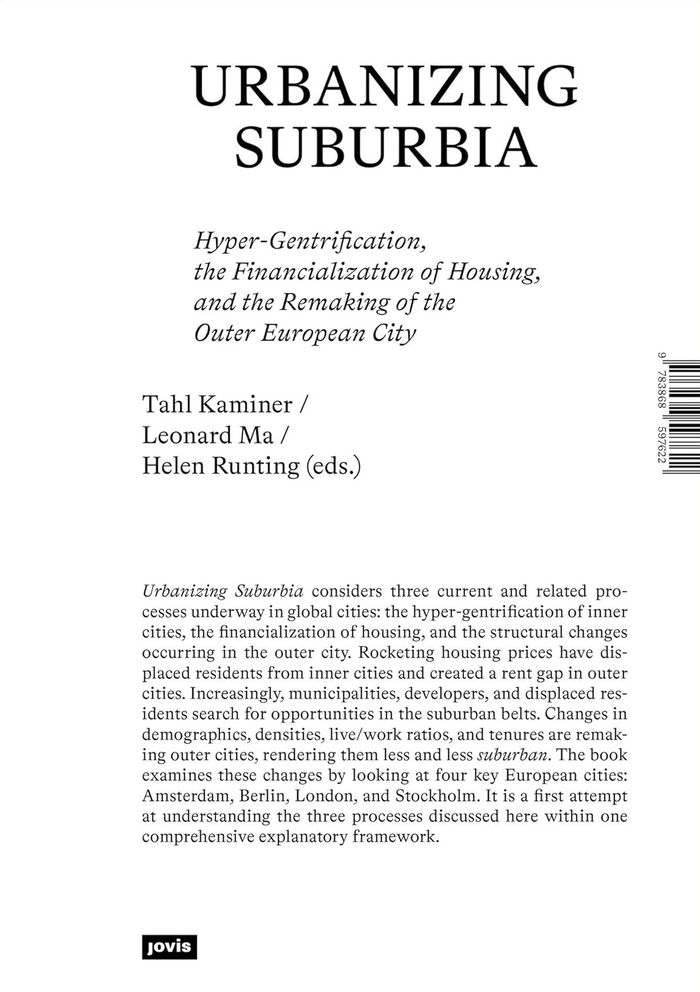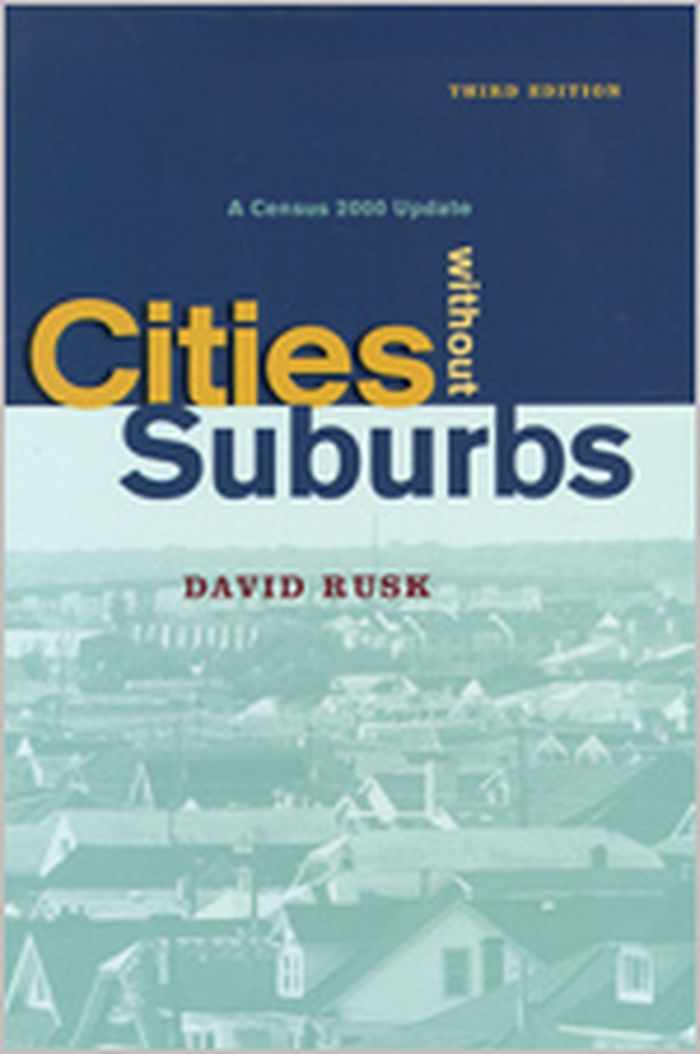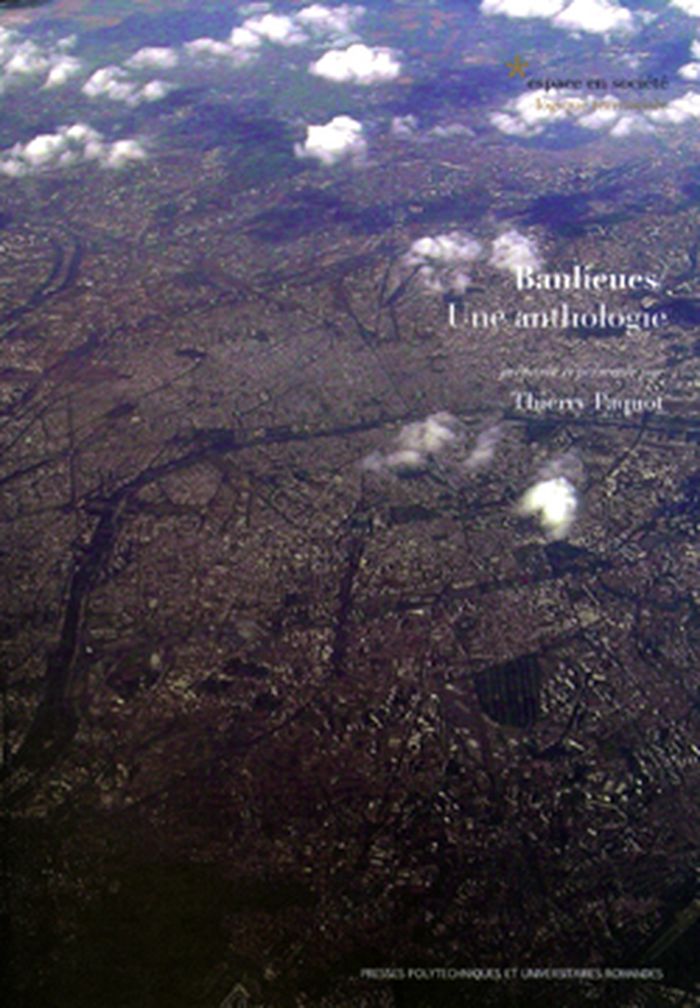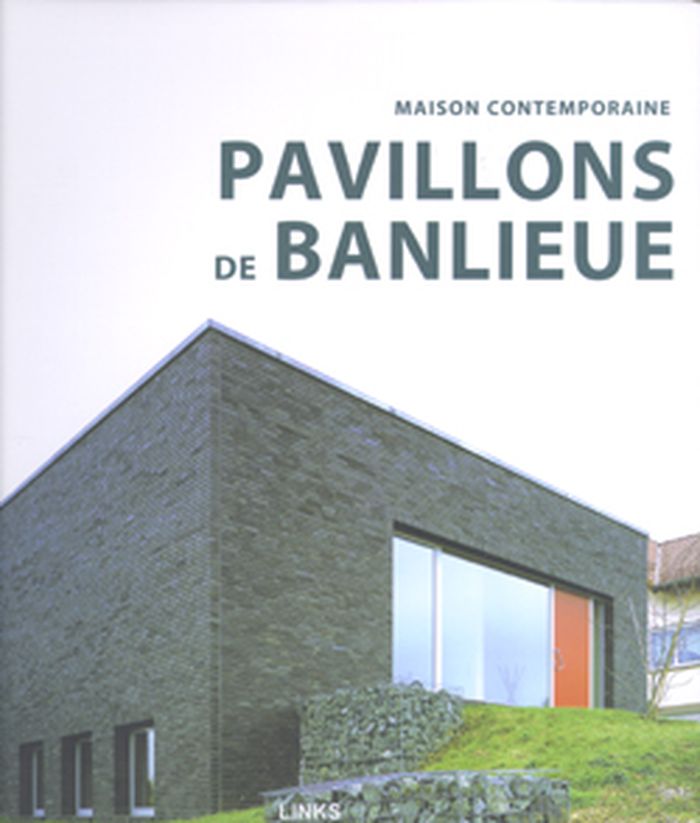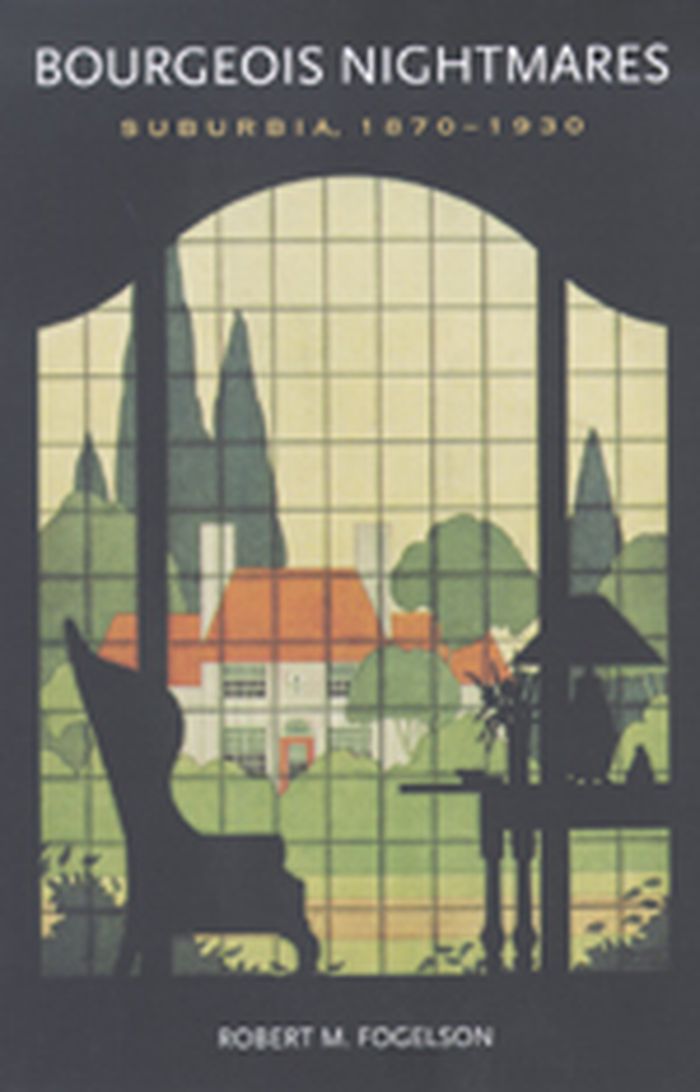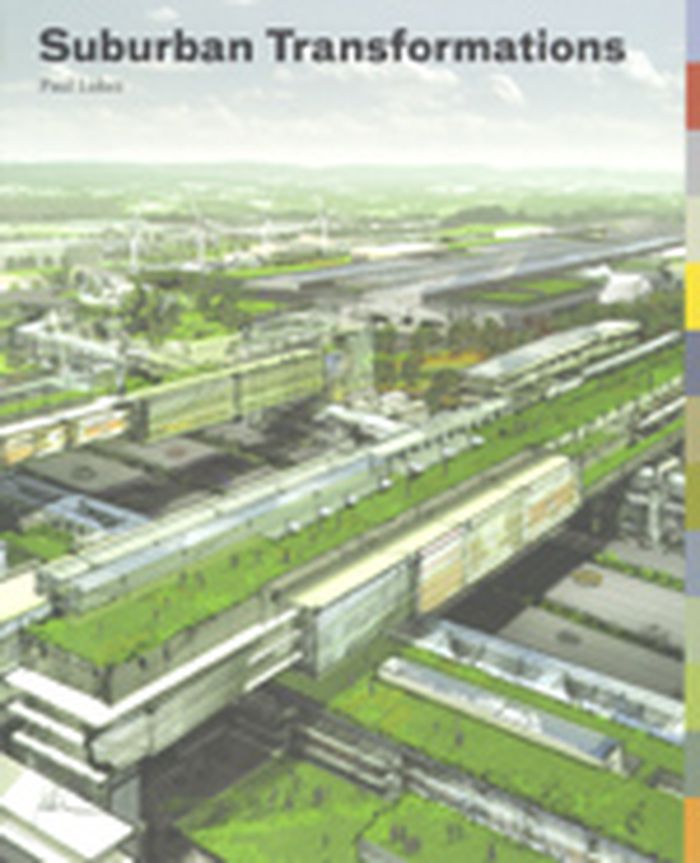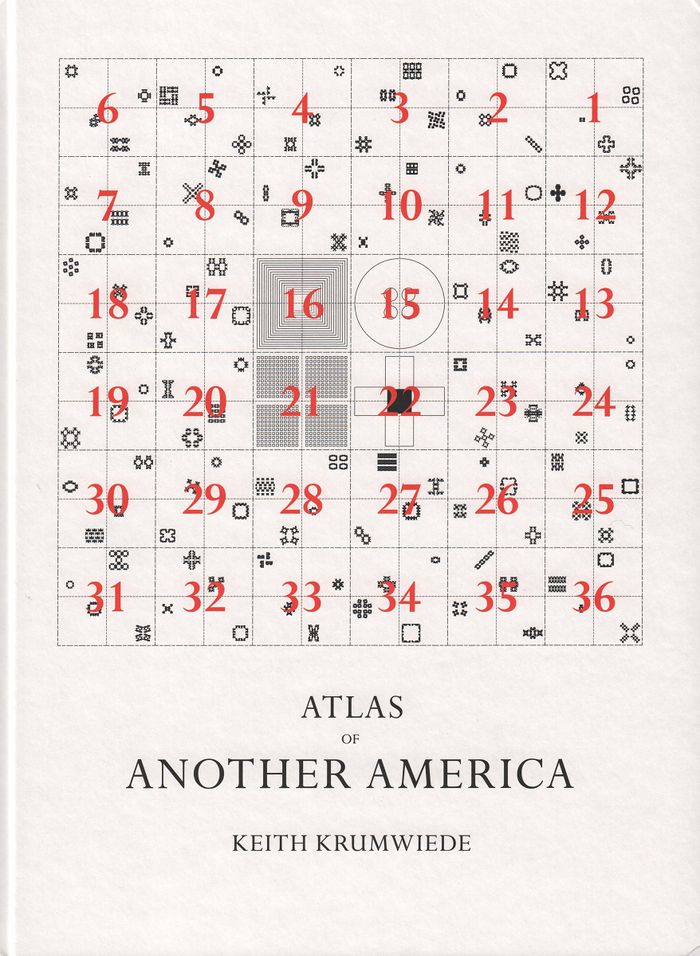books
$22.00
(available in store)
Summary:
This volume is one of three books in The Michigan Debates on Urbanism, a series that also features Everyday Urbanism and New Urbanism. Each book represents a distinct, inevitable, but still-emerging paradigm in contemporary urbanism, and is an elaboration of public debates held at the University of Michigan’s Taubman College of Architecture and Urban Planning during the(...)
Post urbanism & Re urbanism : Peter Eisenman vs. Barbara Littenberg and Steven Peterson, Michigan debates on urbanism vol. III
Actions:
Price:
$22.00
(available in store)
Summary:
This volume is one of three books in The Michigan Debates on Urbanism, a series that also features Everyday Urbanism and New Urbanism. Each book represents a distinct, inevitable, but still-emerging paradigm in contemporary urbanism, and is an elaboration of public debates held at the University of Michigan’s Taubman College of Architecture and Urban Planning during the winter of 2004. Peter Eisenman, acclaimed New York architect, author and theorist, presents several of his recent projects, including his team’s entry for the controversial Ground Zero competition at the World Trade Center site in lower Manhattan. This project and the larger body of his work are termed Post Urbanist by the series editor Douglas Kelbaugh. Post Urbanism refers to a critical, post-structuralist project, expressing avant-garde sensibilities and the techno-flow of a globalizing society. Barbara Littenberg and partner Steven Peterson, also well-known design practitioners from New York, present their entry into the Ground Zero competition, as well as other urban design projects that are characterized as ReUrbanism. Each side takes strong exception to the other’s work, leading to a heated discussion moderated by Roy Strickland, Director of the Master of Urban Design program at Taubman College.
books
February 2005, Ann Arbor
Suburbs
$49.95
(available in store)
Summary:
''Urbanizing suburbia'' considers the relationship between three current processes underway in global cities: the hyper-gentrification of inner cities, the financialization of housing, and the structural changes occurring in the suburbs. The rocketing price of housing in cities around the world has led to a sizable exodus of residents from the inner cities, with many of(...)
Urbanizing suburbia: Hyper-gentrification, the financialization of housing and the city
Actions:
Price:
$49.95
(available in store)
Summary:
''Urbanizing suburbia'' considers the relationship between three current processes underway in global cities: the hyper-gentrification of inner cities, the financialization of housing, and the structural changes occurring in the suburbs. The rocketing price of housing in cities around the world has led to a sizable exodus of residents from the inner cities, with many of those displaced settling in the suburban belts. This change in demographics, coupled with specific regeneration strategies implemented by municipalities, is leading to a remaking of suburbia. The book examines these changes using the examples of four key global European cities: Amsterdam, Berlin, London, and Stockholm. It is a first attempt at understanding the three processes discussed here within one comprehensive explanatory framework.
Suburbs
$25.95
(available in store)
Summary:
David Rusk argues that America must end the isolation of the central city from its suburbs in order to attack its urban problems. Rusk's analysis, extending back to 1950, covers 522 central cities in 320 metro areas of the United States. He finds that cities trapped within old boundaries have suffered severe racial segregation and the emergence of an urban(...)
Cities without suburbs : a census 2000 update, 3rd edition
Actions:
Price:
$25.95
(available in store)
Summary:
David Rusk argues that America must end the isolation of the central city from its suburbs in order to attack its urban problems. Rusk's analysis, extending back to 1950, covers 522 central cities in 320 metro areas of the United States. He finds that cities trapped within old boundaries have suffered severe racial segregation and the emergence of an urban underclass. But cities with annexation powers-- termed 'elastic' by Rusk-- have shared in areawide development. Rusk assesses the major trends of the 1990s, including the preceived rebound of central cities, the impact of Hispanic and Asian migration, and the emerging influence of faith-based movements. New recommendations take account of growing restrictions on cities' annexation powers, even in the south-western United States, and of new opportunities for federal shaping of home mortgage programs and urban planning processes. Rusk's conclusion stresses cities' growing experience with building political coalitions in pursuit of development and growth.
Suburbs
books
$87.95
(available to order)
Summary:
How exactly do small towns become suburbs? How do country roads turn into commercial strips? And what can planners do to prevent these changes in the future? Using the state of Vermont as the rural ideal, the authors compare contemporary vs. traditional development to demonstrate how today's primary way of developing land - suburban sprawl - is forever changing the look(...)
Suburbs
February 2002, Chicago
Above and beyond : visualizing change in small towns and rural areas
Actions:
Price:
$87.95
(available to order)
Summary:
How exactly do small towns become suburbs? How do country roads turn into commercial strips? And what can planners do to prevent these changes in the future? Using the state of Vermont as the rural ideal, the authors compare contemporary vs. traditional development to demonstrate how today's primary way of developing land - suburban sprawl - is forever changing the look of rural American. Using a host of aerial photographs - many altered through computer simulation to illustrate how landscapes are transformed over time - "Above and beyond" argues for a return to traditional development patterns that produce more compact cities and towns. Highlighting widespread trends in contemporary land development - from fragmentation (our tendency to spread out) to separation (our tendencey to allocate separate areas of town for living, working, shopping and playing) - the authors offer case examples of coummunities that have succeeded in curbing those trends. They show how these communities have invigorated their town centers; lured home buyers back to town; integrated working, shopping and recreation areas; nurtured a sense of identity and community; rewritten land-use regulations to allow for more compact developing; and overcome the "cars rule" mentality of suburban development.
books
February 2002, Chicago
Suburbs
Banlieues une anthologie
$57.00
(available in store)
Summary:
Toutes les banlieues du monde ne se ressemblent pas et les banlieues nées de l'urbanisation française méritent une présentation spécifique à laquelle cette anthologie prétend. Comment définir la "banlieue" et les "banlieues"? Quelles en sont les caractéristiques? Quels processus socio-urbains s'y dessinent, quels avenirs s'y annoncent, quels imaginaires s'y enracinent?(...)
Banlieues une anthologie
Actions:
Price:
$57.00
(available in store)
Summary:
Toutes les banlieues du monde ne se ressemblent pas et les banlieues nées de l'urbanisation française méritent une présentation spécifique à laquelle cette anthologie prétend. Comment définir la "banlieue" et les "banlieues"? Quelles en sont les caractéristiques? Quels processus socio-urbains s'y dessinent, quels avenirs s'y annoncent, quels imaginaires s'y enracinent? Une introduction accompagne les textes rassemblés ici ainsi qu'une copieuse bibliographie et une filmographie commentée.
Suburbs
Pavillons de banlieue
$79.95
(available to order)
Summary:
Ce travail monographique analyse, grâce aux exemples récents réalisés par des architectes de renom international, la difficulté d'intégrer dans les vides du puzzle suburbain de nouveaux volumes d'habitation qui abordent les contraintes avec des solutions techniques et formelles exemplaires. Magnifiquement illustré, ce volume analyse 22 projets de Pavillons de Banlieue(...)
Pavillons de banlieue
Actions:
Price:
$79.95
(available to order)
Summary:
Ce travail monographique analyse, grâce aux exemples récents réalisés par des architectes de renom international, la difficulté d'intégrer dans les vides du puzzle suburbain de nouveaux volumes d'habitation qui abordent les contraintes avec des solutions techniques et formelles exemplaires. Magnifiquement illustré, ce volume analyse 22 projets de Pavillons de Banlieue soigneusement sélectionné pour leur créativité et leur génie dans le rapport qu'ils entretiennent avec la rue, le jardin et l'espace intime de l'intérieur. En prenant en compte la nécessité de décrire rigoureusement les projets par le biais de superbes photographies, de plans et de coupes, et de détails sur les matériaux, ce livre offre l'information indispensable sur toutes les étapes du processus de la création architecturale.
Suburbs
$20.00
(available to order)
Summary:
The quintessential American suburbs, with their gracious single-family homes, large green lawns, and leaf-shaded streets, reflected not only residents’ dreams but nightmares, not only hopes but fears: fear of others, of racial minorities and low income groups, fear of themselves, fear of the market, and, above all, fear of change. These fears, and the restrictive(...)
Bourgeois Nightmares : Suburbia, 1870-1930
Actions:
Price:
$20.00
(available to order)
Summary:
The quintessential American suburbs, with their gracious single-family homes, large green lawns, and leaf-shaded streets, reflected not only residents’ dreams but nightmares, not only hopes but fears: fear of others, of racial minorities and low income groups, fear of themselves, fear of the market, and, above all, fear of change. These fears, and the restrictive covenants that embodied them, are the subject of Robert M. Fogelson’s fascinating new book. As Fogelson reveals, suburban subdividers attempted to cope with the deep-seated fears of unwanted change, especially the encroachment of “undesirable” people and activities, by imposing a wide range of restrictions on the lots. These restrictions ranged from mandating minimum costs and architectural styles for the houses to forbidding the owners to sell or lease their property to any member of a host of racial, ethnic, and religious groups. These restrictions, many of which are still commonly employed, tell us as much about the complexities of American society today as about its complexities a century ago.
Suburbs
Suburban Transformations
$44.95
(available to order)
Summary:
Smart Growth advocates, environmentalists, and New Urbanists have all tried in their own ways to spread the message of reforming current land use patterns. Their solutions are often criticized for being overly prescriptive, opposed to growth, or nostalgic, respectively. Suburban Transformations offers an alternative to these practices while synthesizing many of the ideas(...)
Suburban Transformations
Actions:
Price:
$44.95
(available to order)
Summary:
Smart Growth advocates, environmentalists, and New Urbanists have all tried in their own ways to spread the message of reforming current land use patterns. Their solutions are often criticized for being overly prescriptive, opposed to growth, or nostalgic, respectively. Suburban Transformations offers an alternative to these practices while synthesizing many of the ideas and proposals that they put forth. Five case studies provide fully expressed examples of the process, beginning with a sophisticated system of mapping and culminating in computer projections of likely future outcomes, giving the designer the ability to project changes in the community fabric and adding that knowledge to the designers kit of place-making tools.
books
$27.95
(available to order)
Summary:
The city that never sleeps also never stops changing. And while New Yorkers are renowned for their trendsetting, this thought-provoking book argues that New York City itself has become a follower rather than a leader. Once-distinctive streets and neighborhoods have become awash in generic stores, apartment boxes, and garish signs and billboards. Legendary neighborhoods(...)
The suburbanization of New York : is the world's greatest city becoming just another town?
Actions:
Price:
$27.95
(available to order)
Summary:
The city that never sleeps also never stops changing. And while New Yorkers are renowned for their trendsetting, this thought-provoking book argues that New York City itself has become a follower rather than a leader. Once-distinctive streets and neighborhoods have become awash in generic stores, apartment boxes, and garish signs and billboards. Legendary neighborhoods (Little Italy, Hell's Kitchen, Harlem, the Lower East Side) have been smoothed over with cute monikers, remade for real-estate investment and for sale to the highest bidder. What does the future hold for the legendary metropolis, gateway to immigrants and strivers, magnet for builders and dealers, muse for artists and dreamers? Will the current political, economic, and social influences dull its once-famous creative edge and culture of opposition? What will become of the special allure of New York? "The suburbanization of New York" presents fourteen timely, provocative articles that explore the radical transformation unfolding in New York City and raise serious questions about the future of any metropolis struggling to maintain its unique identity.
books
March 2007, New York
Suburbs
$67.50
(available to order)
Summary:
Owning a home is the pinnacle of the American Dream, the ultimate status symbol of the middle class. But is the dream in crisis? As the suburban single-family home has been endlessly multiplied and mass-marketed, it has become entwined with environmental catastrophe and economic crisis. Never before have we been so badly in need of a reconsideration of our cultural values(...)
Atlas of another America: an architectural fiction
Actions:
Price:
$67.50
(available to order)
Summary:
Owning a home is the pinnacle of the American Dream, the ultimate status symbol of the middle class. But is the dream in crisis? As the suburban single-family home has been endlessly multiplied and mass-marketed, it has become entwined with environmental catastrophe and economic crisis. Never before have we been so badly in need of a reconsideration of our cultural values and consumption from an architectural perspective. With "An atlas of another America!, Keith Krumwiede has written a bold and highly original work of speculative architectural fiction that calls on Americans—and, increasingly, the rest of the world—to seriously reconsider the concept of the single-family home. Krumwiede’s “Freedomland” is a fictional utopia of communal superhomes constructed from the remains of the suburban metropolis. Eschewing formal innovation for its own sake, Freedomland’s radical architects rely on artful appropriation and the reorganization of found forms. Krumwiede produces the complete plans for Freedomland in the style of a historical architectural treatise, supplemented with more than two hundred plans and drawings and five essays that draw on a long lineage of architectural thought—from Piranesi to Ledoux, Branzi, and Koolhaas. Among the essays, “Atypical Plans” is a redaction of Koolhaas’s landmark text “Typical Plan,” “Supermodel Homes” looks at the mad genius of developer David Weekley,” and “New Homes for America” is a short story in which a young architect produces new forms of communal living.
Suburbs
